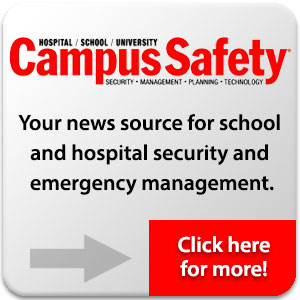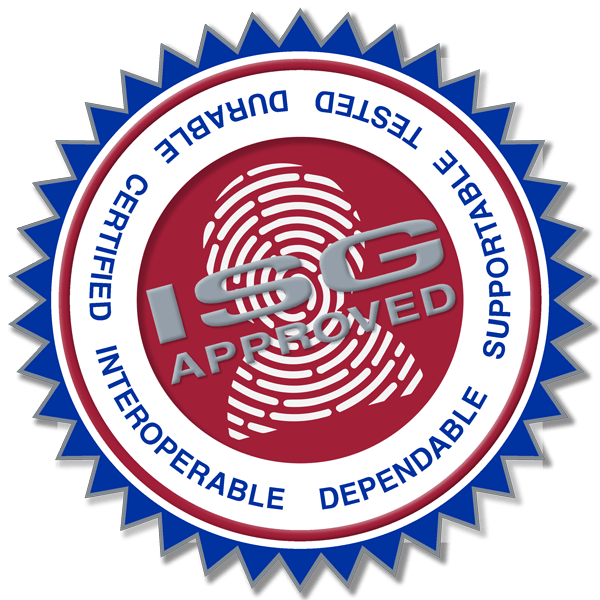Re-posted with permission from Campus Safety Magazine and edited.
The U.S. Department of Justice (DOJ) Office of Community Oriented Policing Services (COPS) School Safety Working Group released Ten Essential Actions to Improve Safety last week, which identifies 10 things schools, school districts and law enforcement can do to mitigate and prevent violence on campus. The actions that are recommended are intended to enable swift and effective police assistance when necessary.
Although the document specifically addresses campus shootings, the suggested actions are also applicable to all areas of school safety, including weather disasters and traumatic events, such as student suicide.
The report recommends a balanced, comprehensive, holistic approach that reflects physical safety, mental health and personal connections to the school community. A wide variety of stakeholders should be involved in protection of the campus, including teachers, administrators, counselors, mental health professionals and support staff (such as janitors and school bus drivers), as well as law enforcement and other first responders, community-based resources and families. Additionally, there should be a focus on attack prevention via intervention rather than just victim mitigation.
I’ve condensed and summarized the report, as well as included a bunch of helpful links. The 10 essential actions are:
1. Comprehensive School Safety Assessment
This is the foundation for all safety and security planning and operations. It identifies the threats with the highest probability of occurring, their potential consequences and the school’s or district’s vulnerabilities to those threats.
The risk assessment and safety plan should be developed by an interagency, multidisciplinary team, and the risk assessment should be reviewed and updated annually. The safety plan should assign faculty and staff clearly defined roles that are consistent with the Incident Command System (ICS).
The report said that school safety plans often fail to include emergency mass notification, the monitoring and management of media released to the public, family reunification, identifying mental health resources before an incident occurs and the possibility of contagion following a student suicide or mass casualty attacks that happen anywhere in the nation.
Free assessment and planning resources can be found at https://rems.ed.gov/.
2. School Climate
A positive campus climate promotes respectful, trusting and caring relationships and open lines of communication, which encourages students to ask for help and report concerns about their peers.
Schools are taking steps to build cultures that are safe, welcoming and inclusive. They also encourage positive connections with students developed by adults and teachers. These measures include violence and bullying prevention programs; training faculty, staff, students and parents how to recognize indicators of potential self-harm, suicide and violence; social emotional learning programs; and bystander intervention programs.
Information on Positive Behavioral Interventions and Supports (PBIS) can be found at https://www.pbis.org/.
3. Campus, Building & Classroom Security
Because no one security option, equipment or technology fits all, schools and districts should begin planning for their security upgrades with a comprehensive risk assessment to identify gaps in campus, building and classroom security. Students should provide input to identify and rank vulnerabilities and offer solutions. Additionally, 70% of U.S. public schools were built before 1970, so the need for retrofits should be reviewed.
Once the gaps and needs are identified, schools and districts should develop plans for acquiring and deploying the necessary technology and equipment in a way that doesn’t sacrifice the school’s primary educational and developmental missions. What is implemented will vary depending on the site, location, resources and personnel available.
Despite these differences, all schools should adopt security plans using a layered approach that addresses the campus, buildings and classrooms. The particular needs of students should also be considered, including individuals with special needs. This will ensure security measures work for all members of the community.
At a minimum, all schools should have the following protective measures:
- Building and classroom numbering systems or other methods for clearly identifying locations to expedite emergency response
- Classroom doors that can be locked from the inside or remotely; if doors are locked remotely, keys or key cards must be readily accessible by law enforcement
- Removable window and door glass coverings that prevent an armed assailant from seeing into classrooms
- Secure, uncluttered safe spaces called “hard corners” in every classroom where students will be safe from projectiles fired into the classroom from outside
- Access control systems, which are being used by 94% of public schools
- Video surveillance, which is being used by 81% of public schools
To review the COPS Office and BJA STOP School Violence grant programs, please visit https://cops.usdoj.gov/svpp and https://www.bja.gov/stop-school-violence-program/index.html.
Additionally, it’s recommended that schools and districts incorporate Crime Prevention Through Environmental Design (CPTED) concepts.
Other equipment and technology that should be considered includes:
- Automated external defibrillators (AED) and stop-the-bleed kits
- Locating a radio repeater in the school building to enhance communication with and between emergency responders
- Silent panic alarms
- Emergency two-way communications with all classrooms, offices and large capacity spaces (gyms, cafeterias, locker rooms, outdoor areas)
4. Anonymous Reporting Systems
These systems have been shown to be effective in identifying and communicating potential targeted violence as well as identifying suicidal threats. Successful anonymous reporting systems educate all members of the community on indicators of self-harm or violence and how to share this information so officials can intervene before violence occurs. Tips can be received in a variety of ways, including mobile apps, online, email, text and phone.
It’s critical that there be robust tracking and accountability measures to ensure adequate follow-up on all reported threats.
The COPS Office School Safety Working Group went on to recommend that state and local school-based anonymous reporting systems be integrated with the national Averted School Violence (ASV) database.
5. Coordination with First Responders
Even in schools with an SRO, an active shooter or other critical incident will result in state and local law enforcement officers and emergency medical services (EMS) responding to the scene. Advanced planning and joint training are essential to ensure the response is rapid and effective. Achieving this level of coordination will require an even more deliberate and intentional approach by administrators in schools without an SRO, where police services are primarily rendered by a state or local law enforcement agency. The need for coordination can be of even greater importance in rural and underserved communities with limited resources. This situation includes schools with armed or unarmed security officers but no SROs.
Some key considerations include:
- Joint training between first responders and school officials on the ICS
- Numbering buildings on school campuses so they are readily identifiable to first responders
- Where applicable, ensuring immediate access to school buildings by providing the necessary permissions via RFID (radio-frequency identification), key fobs, easily identified keys maintained in a secured centralized location, or the like
- Performing walkthroughs and providing access to building floor plans to familiarize law enforcement and EMS with building layout prior to an emergency
- Providing schools with a two-way radio directly linked to the local PSAP (public safety answering point) to ensure an immediate alert of law enforcement agencies in the event of a critical incident
- Communicating with the public through press conferences and social media must be coordinated before a critical incident; small investments in this important area will pay huge dividends
- Recovery: school officials and first responders working together to ensure rapid transportation of the injured, accounting for individuals who were present, interviewing witnesses and initiating victim-witness assistance.
For assistance in developing a family reunification plan, visit www.safeandsoundschools.org.
Come back next week to see part 2 of this story!
Help for Your School is Around the Corner
The ISG offers a wide range of solutions that can improve school safety and security. In fact, whether you manage a K-12 school, a college or university, a healthcare facility, government agency or a corporate campus, we have safety and security solutions that will satisfy all of your needs.
Original article written by Robin Hattersley-Gray for Campus Safety Magazine


